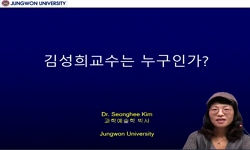In this study, the space names appearing in the <Unyeongjeon> version are compared, and by empirically analyzing the space, the purpose of this study is to find out that the space of <Unyeongjeon> is related to the creative method of the w...
http://chineseinput.net/에서 pinyin(병음)방식으로 중국어를 변환할 수 있습니다.
변환된 중국어를 복사하여 사용하시면 됩니다.
- 中文 을 입력하시려면 zhongwen을 입력하시고 space를누르시면됩니다.
- 北京 을 입력하시려면 beijing을 입력하시고 space를 누르시면 됩니다.
https://www.riss.kr/link?id=A108042450
-
저자
신희경 (성신여자대학교)
- 발행기관
- 학술지명
- 권호사항
-
발행연도
2022
-
작성언어
Korean
-
주제어
Unyeongjeon ; Anpyeong Daegun ; Suseonggung ; Gyeongbokgung ; space ; storytelling ; version ; 운영전 ; 안평대군 ; 수성궁 ; 경복궁 ; 공간 ; 스토리텔링 ; 이본
-
등재정보
KCI등재
-
자료형태
학술저널
-
수록면
201-233(33쪽)
-
KCI 피인용횟수
0
- 제공처
-
0
상세조회 -
0
다운로드
부가정보
다국어 초록 (Multilingual Abstract)
In this study, the space names appearing in the <Unyeongjeon> version are compared, and by empirically analyzing the space, the purpose of this study is to find out that the space of <Unyeongjeon> is related to the creative method of the work. <Unyeongjeon> The space designation and features are divided into three categories, like Inwangsan, Gyeongbokgung, and Cheongpa, there is a mixture of distortions and facts in common names, in the case of Suseonggung, it has a fictional character that reflects empirical geography, names with probabilities such as Dongmun, Sogyeokseo-dong, Tangchundae, and Cheongnyeongsa appear. The space in <Unyeongjeon> seems to reflect the facts, but the notation is different from the usage examples or the actual facts. The notation of Suseonggung appears differently in each version, as well as errors in proper nouns such as Inwang and Gyeongbok and names of spaces that do not match the historical background, such as Tangchundae and Sogyeokseo-dong, appear. By the way, this is a general aspect of <Unyeongjeon> in each version. The name of the space in <Unyeongjeon> is seen as an implicit promise made by the artist and the enjoyment, as well as the result of recognition of the nature of the work. Since the 15th century, Anpyeong Daegun has been remembered mainly for his handwriting and cultural activities through『Haedong Japrok』,『Yongjae Chonghwa』, and 『Somunsseorok』. And in the 17th century, writings to commemorate him were created. Memories from a cultural aspect rather than a political evaluation of Grand Army Anpyeong had an important influence on the meaning production process of <Unyeongjeon>. But Compared to Sarim's perceptions of Gyeyujeongran and Anpyeong Daegun at the time of <Unyeongjeon> creation, the political situation was not very positive. Therefore it can be assumed that it would have been impossible to directly mention Anpyeong Daegun and Gyeyujeongran. It can be said that it is for this reason that <Unyeongjeon> focuses on the cultural activities of Anpyeong Daegun, excluding political events and portraying him as a figure who embodies the moral values. Like this, the space in <Unyeongjeon> is set against the background of the disparity in the political situation that is not yet ripe compared to Sarim's intention to publicize political desires. As a result, the boundary between fact and fiction has become blurred. As such, the <Unyeongjeon> space is the result of the enjoyment's desire and expectation to create interest in sensitive historical events and it stems from the storytelling method as a faction.
참고문헌 (Reference)
1 임형택, "한국문학사의 시각" 창작과 비평사 1984
2 박기석, "한국고전소설작품론" 집문당 711-724, 1990
3 유본예, "한경지략" 탐구당 2016
4 슈테판 귄첼, "토폴로지" 에코리브르 2010
5 서울역사박물관, "청파⋅서계" 서울 역사박물관 2017
6 민영대, "조위한과 <최척전>" 아세아문화사 1993
7 권혁래, "조선후기 역사소설 연구" 延世大學校 大學院 1999
8 "일성록"
9 "육선생유고"
10 신경숙, "운영전의 반성적 검토" 한성대학교 한성어문학회 9 : 55-84, 1990
1 임형택, "한국문학사의 시각" 창작과 비평사 1984
2 박기석, "한국고전소설작품론" 집문당 711-724, 1990
3 유본예, "한경지략" 탐구당 2016
4 슈테판 귄첼, "토폴로지" 에코리브르 2010
5 서울역사박물관, "청파⋅서계" 서울 역사박물관 2017
6 민영대, "조위한과 <최척전>" 아세아문화사 1993
7 권혁래, "조선후기 역사소설 연구" 延世大學校 大學院 1999
8 "일성록"
9 "육선생유고"
10 신경숙, "운영전의 반성적 검토" 한성대학교 한성어문학회 9 : 55-84, 1990
11 서울역사박물관, "옛 서울 지도" 서울 역사박물관 2016
12 "연려실기술"
13 최영호, "역사적 사실과 문학적 상상력" 순천향대학교 이순신연구소 1 : 1-13, 2003
14 윤유석, "역사이야기 스토리텔링" 북코리아 2014
15 유영봉, "안평대군에게 바친 詩" 다운샘 2004
16 신희경, "안평대군 이야기와 <운영전>" 동아시아고대학회 (64) : 31-66, 2021
17 김풍기, "안평대군 그룹의 문화적 토대와 창작 경향-조선 초기 관인문학의 이상향 찾기를 중심으로" 동아시아고대학회 (36) : 77-101, 2014
18 심경호, "안평" 알마 2018
19 에드워드 홀, "숨겨진 차원-공간의 인류학" 한길사 2003
20 "속동문선"
21 김돈, "세조대 단종복위 운동과 왕위 계승 문제" 역사교육연구회 98 : 205-235, 2006
22 "서울역사박물관 상설전시 안내문"
23 "서울 청량리 천장산 청량사 안내문"
24 서울 역사편찬원, "서울 지명사전"
25 장일구, "서사적 공간의 상징적 기획" 한국언어문학회 (58) : 359-383, 2006
26 신경숙, "사계축 소릿꾼 발생에서의 지역적 특성" 한성대학교 한성어문학회 29 : 49-71, 2010
27 "비해당소설"
28 정환국, "민족문학사연구" 민족문학사학회 15 : 38-65, 1999
29 권혁래, "문학지리학 연구의 정체성과 연구방법론 고찰" 우리문학회 (51) : 167-197, 2016
30 김명준, "문학 공간에 대한 분석적 기술 방법" 한국문예창작학회 3 (3): 7-24, 2016
31 "교감본 한국한문소설-전기소설"
32 신희경, "고전소설 공간 답사를 위한 제언" 돈암어문학회 33 : 239-286, 2018
33 "謏聞瑣錄"
34 "端宗實錄"
35 "海東雜錄"
36 "東輿圖"
37 "新增東國輿地勝覽"
38 "慵齋叢話"
39 "宣祖實錄"
40 "太祖實錄"
41 "世祖實錄"
42 정수현, "『번역소학』, 『소학언해』 비교 연구" 영주어문학회 37 : 5-32, 2017
43 양승민, "<최척전>의 창작 동인과 소통과정" 한국고소설학회 9 : 67-113, 2000
44 김현화, "<최척전>의 노정 공간 연구" 어문연구학회 70 : 103-128, 2011
45 권혁래, "<최척전>에 그려진 ‘유랑’의 의미" 국어국문학회 (150) : 207-235, 2008
46 김재웅 ; 권혁래, "<최척전> 국내 공간의 문학지리학적 연구" 온지학회 (42) : 161-192, 2015
47 신희경, "<인현왕후전> 공간의 실증적 탐색" 열상고전연구회 (72) : 105-135, 2020
48 엄태식, "<운영전>의 양식적 특징과 소설사적 의미" 한국고전연구학회 (28) : 253-292, 2013
49 유요문, "<운영전>의 서술 기법과 의미" 고려대학교 2015
50 김나영, "<운영전>의 서사구조에 내재한 비극성 : 신화적 서사패턴의 변용과 인간 욕망의 좌절" 영주어문학회 37 : 33-80, 2017
51 이지원, "<운영전>의 서사 공간 이해 교육을 위한 고찰" 서울대학교 국어교육과 45 : 241-293, 2018
52 이지영, "<운영전> 창작의 문학적 배경과 연원" 국문학회 (26) : 133-164, 2012
53 박희병, "<운영전> 작자 고증" 국문학회 (42) : 5-69, 2020
54 문범두, "<雲英傳>의 공간적 의미와 비극의 성격 -수성궁을 중심으로 -" 한민족어문학회 (71) : 207-248, 2015
55 김익환, "<雲英傳>에 나타난 공간 배경의 의미" 우리말글학회 33 : 103-125, 2005
56 엄기영, "<雲英傳> 수성궁의 공간적 성격과 그 의미" 한국언어문화학술확산연구소 18 : 157-178, 2011
57 최영준, "18⋅19세기 서울의 지역 분화" 고려대학교민족문화연구소 31 : 1-60, 1998
58 이상구, "17세기 애정 전기소설" 월인 1999
59 이근호, "16~18세기 ‘단종복위운동’ 참여자의 복권 과정 연구" 한국사학회 (83) : 115-156, 2006
60 차주영, "16세기 사림세력의 집권과정과 정치성향" 상명대학교 대학원 2004
61 황정연, "15세기 서화의 중심, 안평대군" 내일을 여는 역사재단 37 : 202-221, 2009
62 강혜진, "'수성궁'과 '유영'으로 읽는 <운영전> - 고전소설 속 꿈의 해석에 대한 시론" 택민국학연구원 (25) : 347-379, 2020
동일학술지(권/호) 다른 논문
-
- 영주어문학회
- 장혜진
- 2022
- KCI등재
-
한중 고전소설의 결연징표 비교 연구 - 유형별 서사구조와 변별성을 중심으로-
- 영주어문학회
- 노보윤
- 2022
- KCI등재
-
통시적 관점에서의 품사 통용 연구 - 문법화 현상을 중심으로 -
- 영주어문학회
- 허원영
- 2022
- KCI등재
-
- 영주어문학회
- 명수현
- 2022
- KCI등재
분석정보
인용정보 인용지수 설명보기
학술지 이력
| 연월일 | 이력구분 | 이력상세 | 등재구분 |
|---|---|---|---|
| 2027 | 평가예정 | 재인증평가 신청대상 (재인증) | |
| 2021-01-01 | 평가 | 등재학술지 유지 (재인증) |  |
| 2018-01-01 | 평가 | 등재학술지 선정 (계속평가) |  |
| 2016-01-01 | 평가 | 등재후보학술지 선정 (신규평가) |  |
| 2015-12-01 | 평가 | 등재후보 탈락 (기타) | |
| 2013-01-01 | 평가 | 등재후보학술지 유지 (기타) |  |
| 2012-01-01 | 평가 | 등재후보학술지 유지 (기타) |  |
| 2011-01-01 | 평가 | 등재후보학술지 유지 (등재후보1차) |  |
| 2010-01-01 | 평가 | 등재후보학술지 유지 (등재후보1차) |  |
| 2008-06-24 | 학회명변경 | 영문명 : The Journal of Yeongju Language & Literature -> The Association of Yeongju Language & Literature |  |
| 2008-01-01 | 평가 | 등재후보학술지 선정 (신규평가) |  |
학술지 인용정보
| 기준연도 | WOS-KCI 통합IF(2년) | KCIF(2년) | KCIF(3년) |
|---|---|---|---|
| 2016 | 0.55 | 0.55 | 0.57 |
| KCIF(4년) | KCIF(5년) | 중심성지수(3년) | 즉시성지수 |
| 0.53 | 0.47 | 0.997 | 0.15 |




 KISS
KISS






